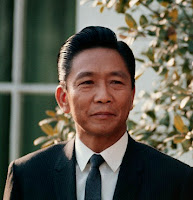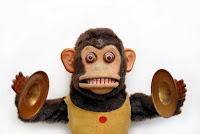The Philippines: a journey back to natural primitivism since 1946
 A factoid we Filipinos often fret about has to do with the whole wasted opportunity we now struggle to come to terms with around our supposedly being a promising emerging regional star back in the 1950s -- our being Number Two to Japan's Number One in economic development back then while all the rest -- Singapore, Taiwan, the Koreas, Thailand, Malaysia and Hong Kong were all mosquito-infested colonial outposts. We were the poster child of American colonial legacy and looked up to as a role model to be emulated. What happened?
A factoid we Filipinos often fret about has to do with the whole wasted opportunity we now struggle to come to terms with around our supposedly being a promising emerging regional star back in the 1950s -- our being Number Two to Japan's Number One in economic development back then while all the rest -- Singapore, Taiwan, the Koreas, Thailand, Malaysia and Hong Kong were all mosquito-infested colonial outposts. We were the poster child of American colonial legacy and looked up to as a role model to be emulated. What happened?Esteemed owner of AntiPinoy.com BongV poses a brilliant question to get us started in a journey to revisit this road-to-success-not-taken by our sad nation.
"If Philippines was no 2 in 1950 – could it be said then that the culture at that time was different from today’s culture? [...] The current AS-IS state"
Here is my shot at an answer:
* * *
One could argue that we were number two then because we were fresh out of 50 years of U.S. rule, and perhaps money was flowing in and jobs abounded because of the repair work being done in the aftermath of WWII bombing. If Japan was No. 1 at the time, it was because it was number one in Asia since the 19th Century and specially after it established itself as a major military power after it emerged victorious from the Russo-Japanese war at the turn of the century.
Compare the Philippines and Japan (No 2 and No 1 respectively in the 1950s). The Philippines was so under the management of a foreign power, whilst the Japanese were so under its own management and conscious initiative.
So in a sense, it is not surprising that the Philippines began its decline after it became independent (in the REAL sense) after 1946 -- it was merely reverting back to its natural state (since it was no longer propped up by a foreign master that was counteracting this natural tendency) -- seeking its own level, kung baga -- back to the state in which the Spanish first found us back in the 16th Century. The only problem was we were regressing back to our natural state while our population size was galloping towards the monstrous levels we see today. Back to primitivism but NOT back to a natural population level that fits our labour-intensive low-capital-applied primitivist way of life.
Japan on the other hand, after its defeat in WWII, merely continued what it was doing since its modernisation drive in the 19th Century. It was a sustainable momentum because it was a collective initiative fuelled from the very "DNA" of its cultural fabric.
* * *
Culture is constant relative to geopolitics. Culture may change but not as fast as a society changes hands from one sphere of influence to another. That seems to be the essence of the history of the Philippines.




Here's an interesting comparison: Japan was under US occupation from 1945-1952. Germany was under allied occupation as part of the Marshall Plan from 1945-1949. The Philippines, which was almost as badly wrecked by the war as either of those two countries, was given its independence in 1946, but enjoyed nearly the same degree of American assistance through at least the end of the Korean War. So in other words, all three countries had roughly the same amount of 'intervention'-- and in Germany's case, that was even handicapped by the division of the country and the stress of the early years of the Cold War.
ReplyDeleteI think you're exactly right -- the biggest difference is culture. Both the Germans and the Japanese have always had a strong sense of what they felt being "German" or "Japanese" should mean. Filipinos can't even define their culture, let alone develop any sense of unity and common purpose.
There is a cebuano culture, an ilonggo culture, a bicolano culture, and so on....
ReplyDeleteBut the "Filipino culture" does not exist. It is a fabrication.
The native cultures in the Philippines never really changed over the centuries. Yes I agree there is no Filipino culture, there are basically tribal cultures and the Philippines remains tribal in nature. Those who really understood and internalized what the colonizers were trying to teach them were a minority and that minority has died of left the country for the most part. All the Western facade and modern pretensions are just that - simply pretensions. There is a difference between theoretically understanding things and internalizing them, and Filipinos for the most part have not truly understood Western concepts of how to run things. Try thinking of all Filipino politics as a game of shifting alliances between clans and tribes, similar to the Filipino teleseryes Amaya, and everybody dressed that way. The Western clothes and Western terms used as just window-dressing. Although I for my part am very happy not too have to see Noynoy dressed in bahag.
ReplyDelete